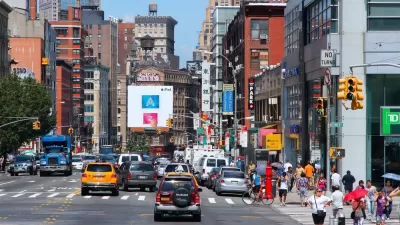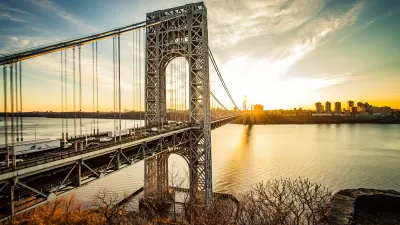Though fewer in number, taxis had no competition with subways, buses, and commuter rail all shut down in advance of the Monday night storm. Matt Flegenheimer continues his update on how Hurricane Sandy affected pubic transit and roads in New York.
If you could find a taxi, destinations were limited due to flooded roadways. Destinations in and out of Manhattan were severely restricted due to bridge and tunnel closures, though there was little need to go to the three area airports that had canceled most arriving and incoming flights.
"By midmorning (on Monday, Oct. 29), much of the Franklin D. Roosevelt Drive was underwater, shuttering 63 blocks' worth of northbound lanes. By the afternoon, the Holland and Brooklyn-Battery Tunnels were closed, too. And by nightfall, Hurricane Sandy had nearly isolated the island of Manhattan: the East River crossings like the Brooklyn and Manhattan Bridges, were closed at 7 p.m., as were the George Washington, Verrazano-Narrows, Whitestone and Throgs Neck Bridges, among others.
Even with the Lincoln and Queens-Midtown Tunnels remaining open Monday night, it was clearly the transportation system's most helpless day."
"There's no place for the water to go," said Judie Glave, a spokesman for the Metropolitan Transportation Authority, which operates the Brooklyn-Battery Tunnel. "We're pumping water into the river, and it's coming back."
"Joseph J. Lhota, the chairman of the transportation authority, warned at a news briefing on Monday that the expected storm surge posed a significant threat to subway switches and the electronic signaling system."
"The general ability to run the system and keep it safe is in jeopardy," Mr. Lhota said.
At The Wall Street Journal, Ted Mann takes a closer look at the damage salt water can inflict on the city's subway system, and the laborious process to get it up and running again. At a late morning news conference on Tuesday, Mayor Bloomberg estimated that the subway system will remain closed for "a good four or five days."
FULL STORY: Taxis, but Not as Many as Usual, Are Among Only Options

Alabama: Trump Terminates Settlements for Black Communities Harmed By Raw Sewage
Trump deemed the landmark civil rights agreement “illegal DEI and environmental justice policy.”

Planetizen Federal Action Tracker
A weekly monitor of how Trump’s orders and actions are impacting planners and planning in America.

The 120 Year Old Tiny Home Villages That Sheltered San Francisco’s Earthquake Refugees
More than a century ago, San Francisco mobilized to house thousands of residents displaced by the 1906 earthquake. Could their strategy offer a model for the present?

LA’s Tree Emergency Goes Beyond Vandalism
After a vandal destroyed dozens of downtown LA trees, Mayor Karen Bass vowed to replace them. Days later, she slashed the city’s tree budget.

Sacramento Leads Nation With Bus-Mounted Bike Lane Enforcement Cameras
The city is the first to use its bus-mounted traffic enforcement system to cite drivers who park or drive in bike lanes.

Seattle Voters Approve Social Housing Referendum
Voters approved a corporate tax to fund the city’s housing authority despite an opposition campaign funded by Amazon and Microsoft.
Urban Design for Planners 1: Software Tools
This six-course series explores essential urban design concepts using open source software and equips planners with the tools they need to participate fully in the urban design process.
Planning for Universal Design
Learn the tools for implementing Universal Design in planning regulations.
Ada County Highway District
Clanton & Associates, Inc.
Jessamine County Fiscal Court
Institute for Housing and Urban Development Studies (IHS)
City of Grandview
Harvard GSD Executive Education
Toledo-Lucas County Plan Commissions
Salt Lake City
NYU Wagner Graduate School of Public Service





























